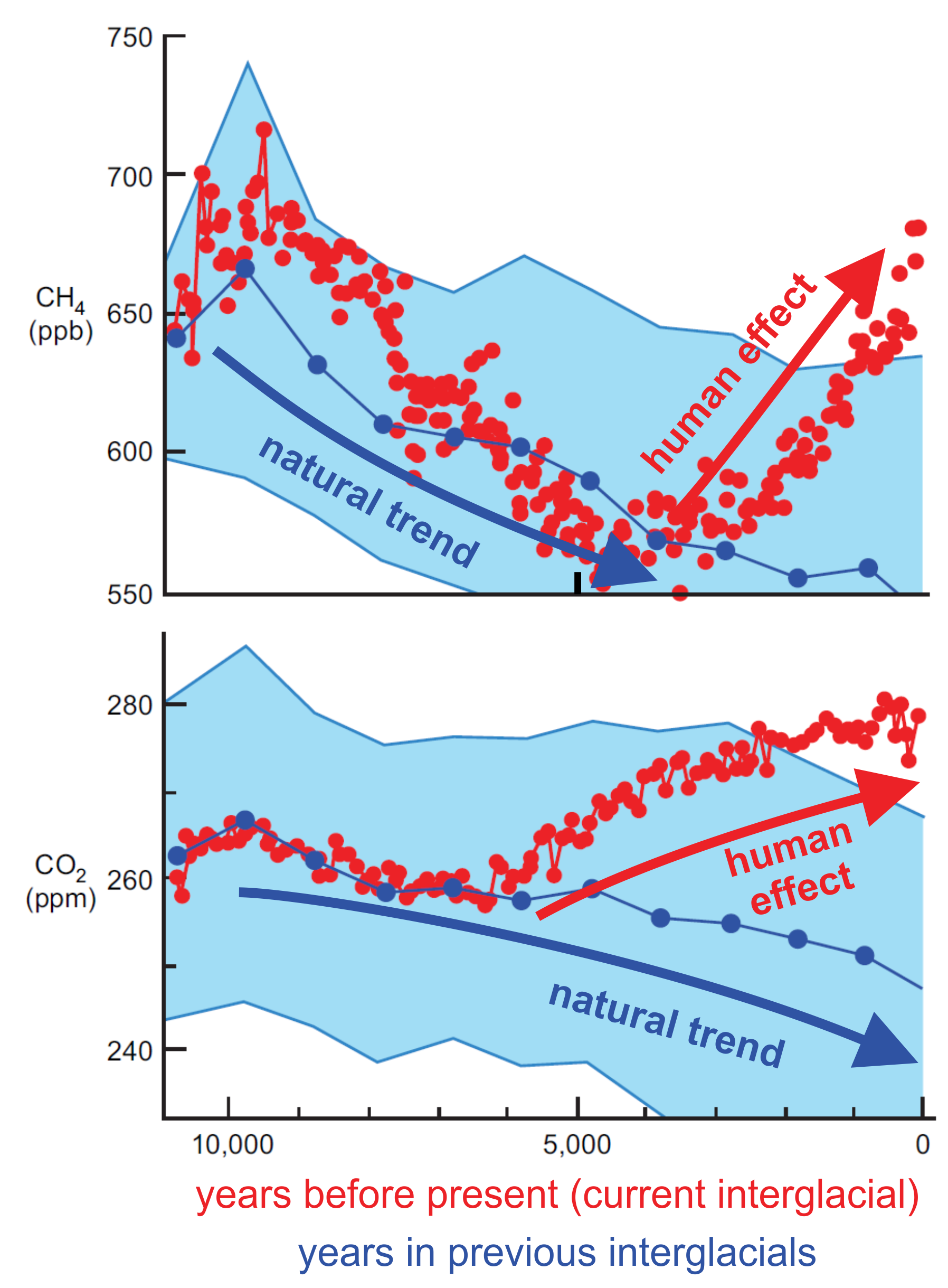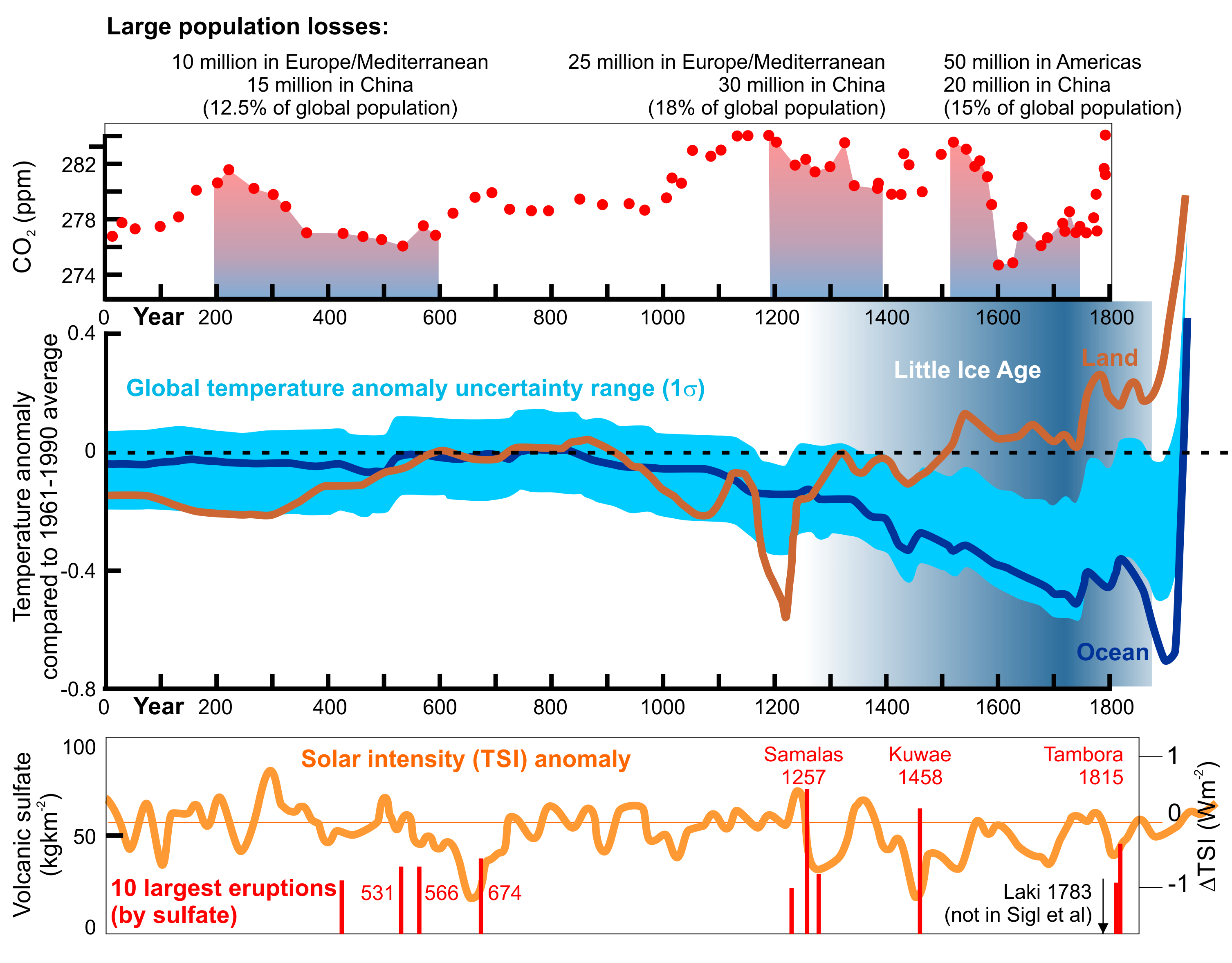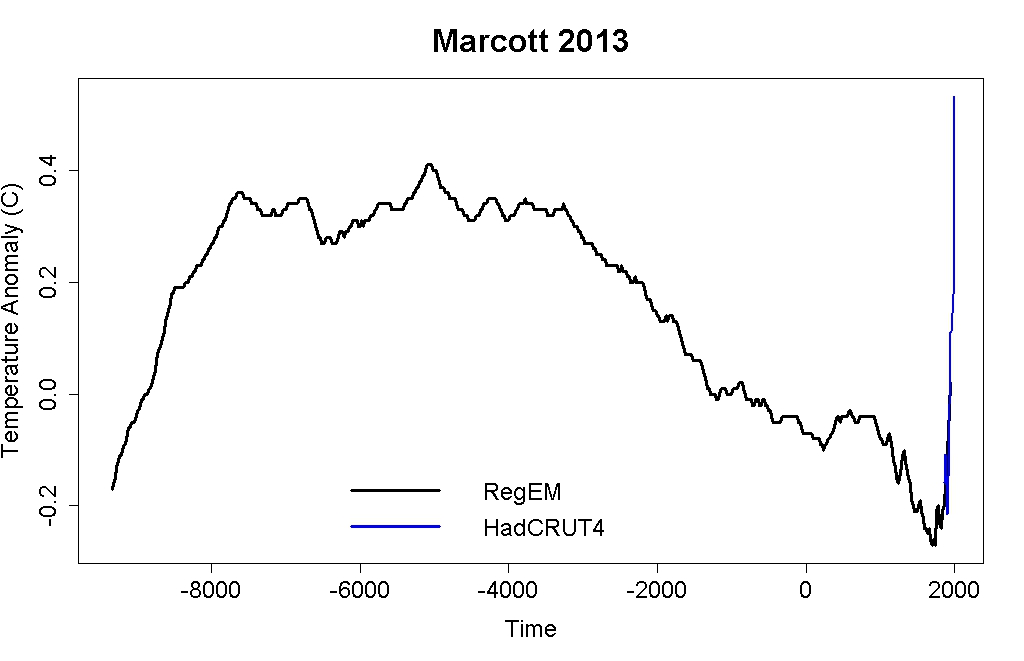
Homo incendius – “fire man” – is an informal nickname for our ancestors who first learned how to make fire. As one of the quintessential human attributes, you might expect fire-making to have arisen along with our own species, Homo sapiens when we emerged in Africa some 208,000 years ago.
Nope.
You have to go much further back in time, before Neanderthals and even before the earlier Homo heidelbergensis. The first solid evidence for our ancestors’ regular use of fire dates to 1 million years ago, and possibly as far back as 1.5 million years ago. That’s during the reign of Homo erectus – our first fire-making, food-cooking, big-game-hunting, art-making, intercontinental-travelling ancestor.

Homo erectus a.k.a. Homo incendius (Source: Cicero Moraes - via Wikimedia Commons)
Homo erectus took fire-making skills to the Levant and all the way to China by about 770,000 years ago, but strangely our contemporary ancestors who traveled to the fringes of the ice sheets in Europe don’t seem to have been habitual fire-users until much later - about 400,000 years ago.
Our pre-agricultural ancestors may have set fire to their surroundings by accident or deliberately to flush out prey or predators. Either way they left traces of their activity in the form of changes in the quantities and type of charcoal washed into lakes or blown into the dust deposits, later to be recorded by scientists. From records like these it seems that humans were already disrupting of the natural feedbacks between climate, fire regime, and vegetation in a small way as long as 150,000 years ago. Wherever our early ancestors went they affected their regional environment directly through burning and indirectly by removing large browsing animals, with consequential changes to vegetation distribution, but our population was too small (perhaps a few hundred thousand people in all the world 100,000 years ago) to have much impact on global Pleistocene climate.
Domestication of crops began in the Middle East around 12,000 years ago and by 8,000 years ago people there had become dependent on agriculture for most of their food. Around 7,500 years ago people across a large area of Europe and Egypt began farming those same Middle-Eastern crops, along with domesticated cattle, sheep, pigs, and goats. In China, people began to farm millet and dryland rice around 9,500 years ago, followed by rice farming in flooded paddy fields around 6,500 years ago. Between 7,000 and 5,000 years ago the number of farmed sites in China multiplied a staggering forty-fold!
In South Asia, livestock farming began around 7,000 years ago, spreading across much of Eurasia by about 1,000 years ago. In Sub-Saharan Africa crops like millet, yam, oil palm and Kola nuts were cultivated from around 5,000 years ago, with other crops added later. As the global climate cooled and the summer monsoon weakened, herders moved south from the Sahara, introducing livestock southwards as they went.
In the Americas people began to domesticate various kinds of squash around 10,000 years ago, adding beans, tomatoes and other vegetables later. By 8,700 years ago they had begun to cultivate maize (corn), but it took until 4,300 years ago for human selection to evolve maize with cobs big enough for people to cease dependence on wild foods. Large parts of South America became cultivated, and in North America farming-supported cultures spread through the land surrounding the Mississippi, Tennessee and Ohio rivers from around 2,500 years ago, to the point that by the 16th century much of the region was thickly inhabited.
Across the world people cleared forests to make space for agriculture. They used stone tools like the ax in the photo below to girdle (ring-bark) trees until they died, then set fire to the dead wood during dry spells, before planting in the clearings. This earliest farming used extravagant amounts of land compared to today's practices, requiring around 4 hectares (8-9 acres) per person, because of the need to let soil recover ("long fallow") and because there was much less competition for land due to lower populations.
But those farm-fed populations grew dramatically. In Europe the population was well under 1 million at the dawn of agriculture, but by 2,000 years ago it had reached 30 million! In China the intense rice-based agriculture supported a dramatic population rise to about 60 million people by 2,500 years ago. And in the Americas, by the time of the earliest European contact, the population was around 40-60 million, or about 10% of the global population.
An approximately 4,000 year old neolithic stone ax from Langdale in England. By JMiall CC BY-SA 3.0, via Wikimedia Commons
By the Roman era, European deforestation was already so extensive that lumber for ship building had to be imported from the far reaches of the empire. By then half the forests of Europe had been eliminated, a process that continued until rulers protected the remaining tracts of woodland by banning commoners from them in the Middle Ages. In China, intense deforestation forced people to burn coal for heat in lieu of wood by the year 400.
By 1600 all but 5-15% of Western Europe had been deforested and there was a growing need to get ever more food from the available land to sustain rising populations. This triggered a number of farming innovations (better plows, windmills to drain wetlands, manure fertilizer, a shorter fallow period, animal husbandry, imported American crops like potatoes), which delivered enough food to sustain a European population of 180 million by 1800 (also helped by better sanitation and medicine).
The timing of the widespread adoption of agriculture across Eurasia coincides with increases in atmospheric CO2 and methane levels recorded in ice cores.

Trends in CO2 and methane (CH4): red– current interglacial (Holocene), dark blue– average of prior interglacials over the last 800,000 years aligned by insolation to match early Holocene trend, light blue - standard deviation of dark blue. Source: Ruddiman, et al: “Does pre-industrial warming double the anthropogenic total?” The Anthropocene Review 2014 1: 147 (annotations added for this article)
Methane and CO2 levels had been declining from around 10,000 years ago, in line with the natural cooling climate due to changes in Earth’s orbit, just as they had done in all the prior interglacials. But then they reversed their natural decline at around 6,000 years ago for CO2 and 5,000 years ago for methane. This departure from the natural trend of all prior interglacials in the last 800,000 years was strong and sustained, eventually exceeding the natural range long before the industrial era.
Most natural methane is emitted from wetlands, and cultivation of rice in wet paddies creates artificial wetlands, which are a significant source of manmade methane. Livestock is another significant source of methane.
Scientists calculated the rise of pre-industrial methane with the help of a GIS (Geographic Information System) populated with archaeological data on the spread of rice farming and also the spread of livestock. They found that the modeled methane increase from both sources tracks the rise of atmospheric methane recorded in ice cores, although calculations suggest that both human-caused and natural sources of methane are needed to explain the methane levels recorded in ice cores.
That methane is gradually oxidized to CO2 at rates of about 540 million tonnes per year. But most of the CO2 was emitted from tree burning and decay, which combines carbon in the wood with oxygen to make CO2. Scientists have calculated that the carbon emitted by the land clearance between 7,000 years ago and the industrial era was around 340 billion tons of carbon, a figure that dwarfs natural emissions. Much of that was returned to the ground in Arctic peat bogs, but the remainder, along with methane, kept the climate warmer by between 0.7°C and 1.2°C than it would otherwise have been. That is roughly the same as the industrial era warming that has occurred since then, but industrial warming is packed into a time period less than 4% as long as the pre-industrial era.
The significance of that warming is that it kept our world from sliding back into the next ice age, which was the natural order of prior interglacial-to-glacial cycles, controlled by wobbles in Earth's orbit around the Sun. In fact, without that extra CO2 and methane, year-round snow would by now be blanketing parts of northern Canada and Eurasia as precursors of the ice sheets typical of ice-age glaciations.
By the Roman era, population growth, trade, and large-scale movements of armies brought with them the fabled four horsemen of the apocalypse.
Between the years 200 and 600 the population of Europe declined by about 40% (10 million people) through a sequence of plagues: Galen's Plague and the Plague of Cyprian (both possibly smallpox), and the Plague of Justinian (bubonic plague). As a result, farms and villages were abandoned and reclaimed by forests as Europe experienced its "Dark Ages."
Plague struck Europe again between 1347 and 1352 - the "Black Death." Around 30% of the European population died (25 million people). Entire villages were wiped out and crops were left unharvested. In populous areas abandoned farms were soon taken over by others, but in more remote parts of Northern Europe many farms reverted to the wild.
Invasions and civil strife in China between the years 200 and 600 caused the loss of some 15 million people (around 7.5% of global population). Later the Mongol invasion caused a population decline between the years 1200 and 1400. Around 30 million people perished, mostly as a result of starvation resulting from the Mongol destruction of rice paddy infrastructure. Later, in the 1600s, war and smallpox claimed 20 million lives.
But those losses pale when compared to the event which Bill Ruddiman has called: "arguably the greatest tragedy in all of human history."
European contact in the Americas introduced smallpox, swine 'flu, measles, tuberculosis, whooping cough, anthrax, brucellosis, leptospirosis, and malaria, both by personal contact and via the introduction of livestock. Known as "The Virgin Soil Pandemic," it caused the loss of some 50 million people or 85-90% of the combined American population over a century starting around the year 1525. Entire cultures collapsed and the old settlements, farms, buildings, monuments, roads and earthen mounds were abandoned to nature.
These episodes of abandonment and reforestation are reflected by reductions in CO2 levels recorded in ice cores.

Population decreases and CO2 decreases recorded in ice cores from the Law Dome over the last 2000 years alongside global temperatures, Total Solar Irradiance, and major volcanic eruptions. Population and CO2 redrawn from Ruddiman 2014 "Earth Transformed" figure E-6 (W H Freeman), Temperature anomaly redrawn from Marcott et al 2013 figure S11(c), Volcanic sulfate redrawn from Sigl et al 2013, TSI redrawn from Steinhilber et al 2009 (0=1986 (1365.57 Wm−2)).
Calculations of the American population collapse suggest that about 37 billion tons of carbon was captured and sequestered from the atmosphere at that time. This is a staggering quantity of CO2 drawdown over such a short time, and likely contributed to the cooling of the Little Ice Age (see the figure above).
Pre-industrial human influence kept the climate warmer than it would otherwise have been, insulating us and delaying the normal slide back into the next ice age that had happened at the tail end of all the prior interglacial periods. But although their effect was diminished, natural orbital changes did not relinquish overall control on our climate, which carried on cooling over the last 6,000 years despite pre-industrial emissions. When CO2 levels were reduced by the American population collapse, our climate flirted with glacial conditions in the Little Ice Age.
But everything changed in the industrial era, when humans finally snatched control of the climate away from the natural, orbitally-driven cycles that had governed the climate and punctuated our evolution and dispersal throughout the last several million years.
In just the last century or two, 6,000 years of orbitally-driven cooling temperatures have been entirely reversed! (see the graph below). That's because greenhouse gasses are now 68% more abundant in the atmosphere than they were in 1750, and the trend is sharply higher still, to levels and temperatures not seen since long before the evolution of our first fire-making ancestor, Homo erectus.

Temperature reconstruction for the last 11,300 years by Marcott et al, plus recent temperatures (HadCRUT4) Created by Tamino.
It's fair to say that the Early Anthropocene Hypothesis hasn't yet gained universal acceptance (as the IPCC AR5 highlights). Some of the debate has centered on the relative contribution of natural versus human-caused contributions to pre-industrial climate. Some of the debate has suggested that the MIS 11 interglacial shows a similar late uptick in greenhouse gas levels depending on the method of comparing the timing of different interglacials. But Ruddiman et al gave a detailed defense of their methods in 2011, and an expanded treatment of alternative explanations for the data can be found in Ruddiman's book: "Earth Transformed." Over the past 14 years the theory has garnered support from longer ice core records, expanded archaeological evidence, and improved estimates of population and land cover.
Bill Ruddiman's 2014 book: "Earth Transformed" (published by W.H. Freeman) is a fascinating, readable, and well-reasoned examination of the topic for those who want to delve into more detail than space here allows. Even though the book was written for undergraduates, its use of plain English makes it an easy read for a general audience too.
The book is the source for all content in this post not otherwise attributed.
I'd like to thank Andy Skuce and John Mashey for helpful comments and suggestions
Posted by howardlee on Tuesday, 13 January, 2015
 |
The Skeptical Science website by Skeptical Science is licensed under a Creative Commons Attribution 3.0 Unported License. |